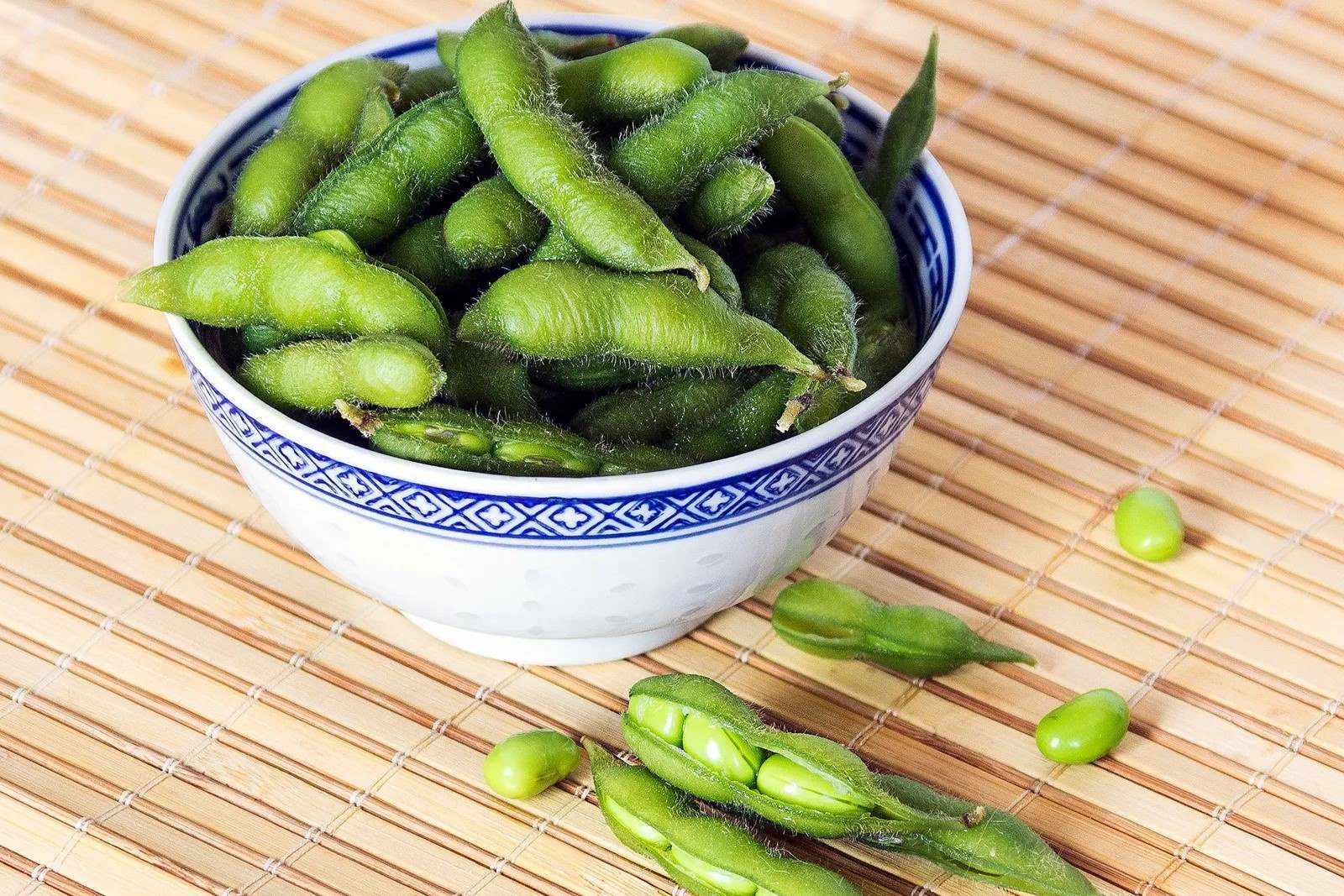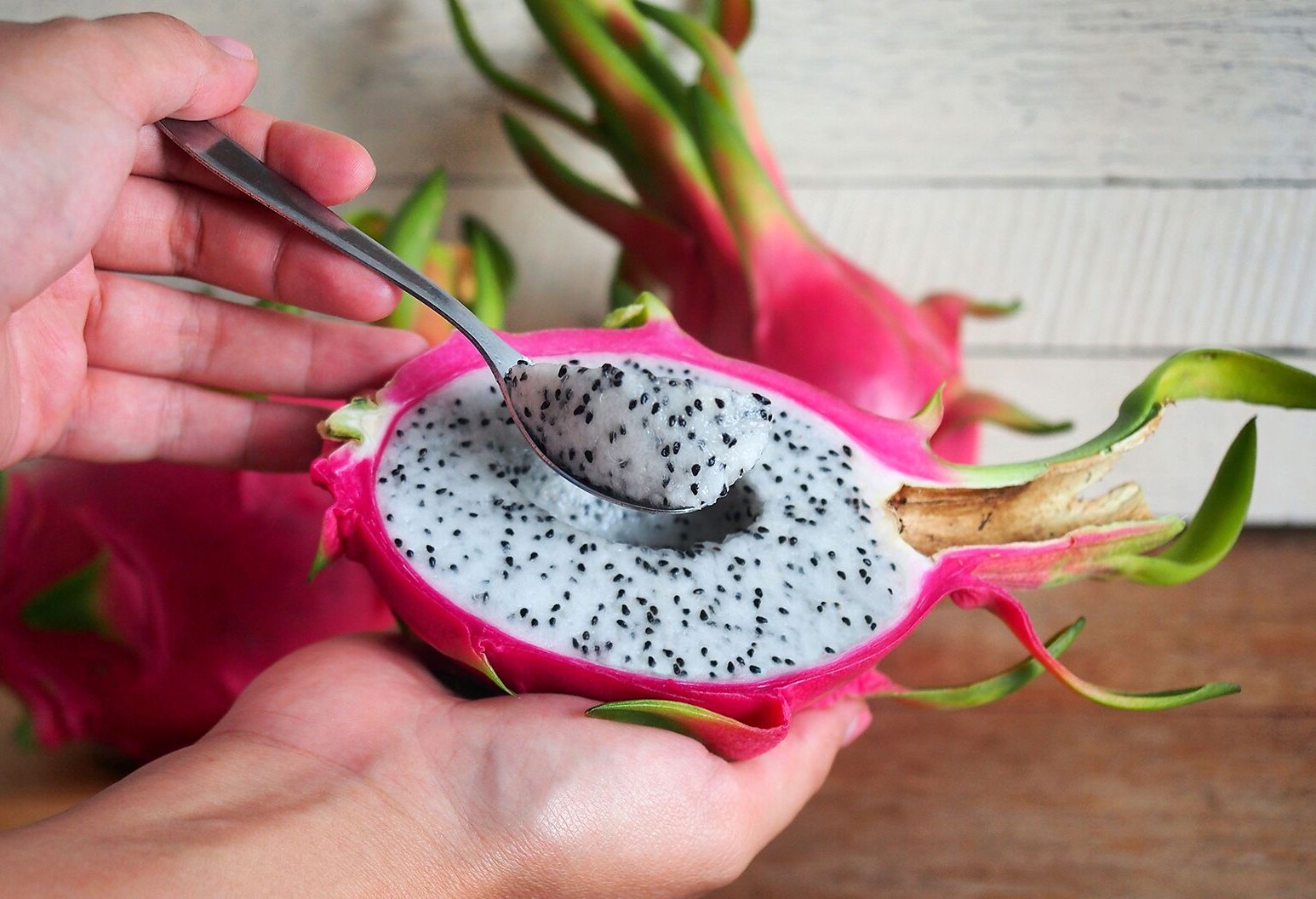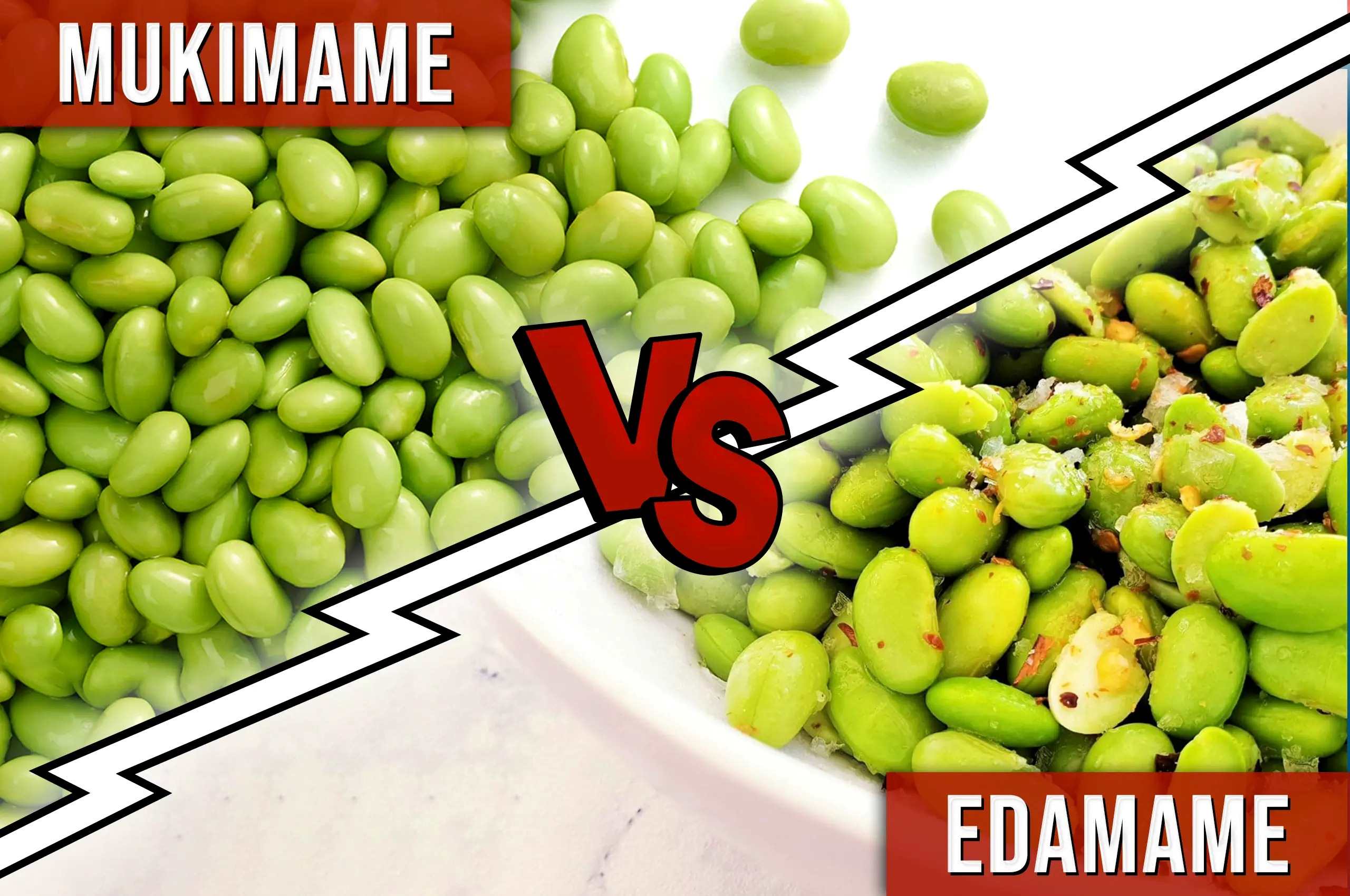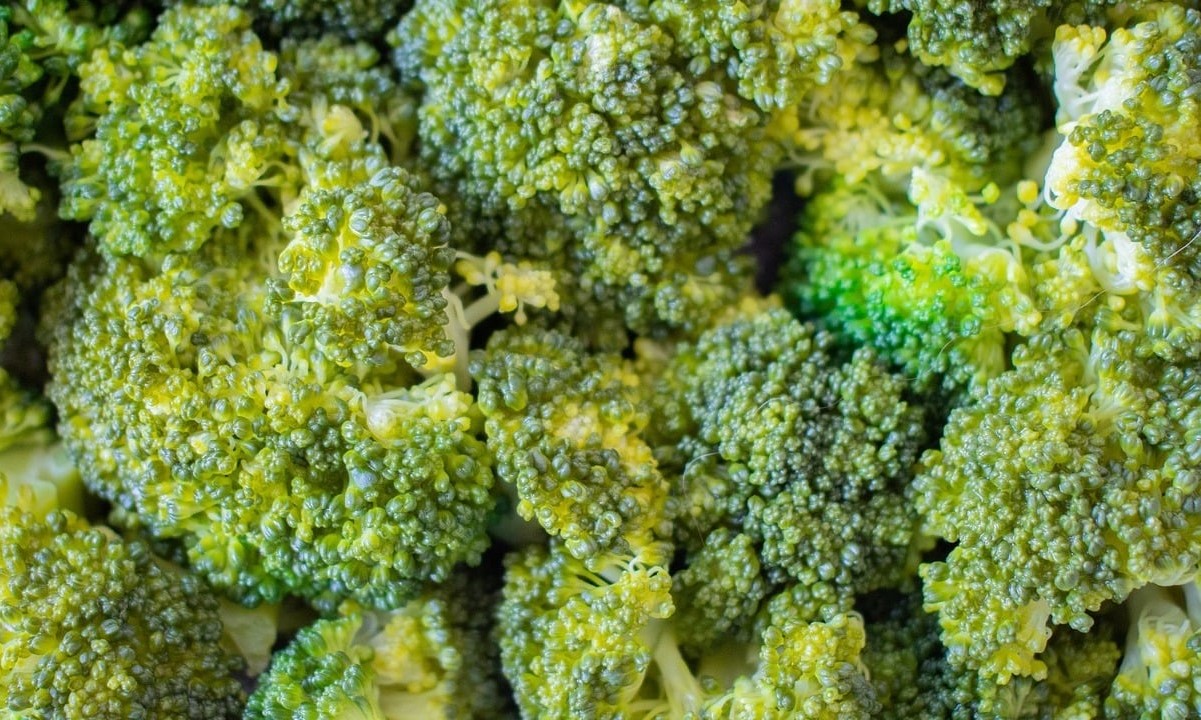Home>Food and Cooking>How To Eat Edamame


Food and Cooking
How To Eat Edamame
Published: March 2, 2024
Learn how to eat edamame and incorporate it into your cooking routine. Discover delicious recipes and tips for preparing this nutritious food. Perfect for food and cooking enthusiasts!
(Many of the links in this article redirect to a specific reviewed product. Your purchase of these products through affiliate links helps to generate commission for Noodls.com, at no extra cost. Learn more)
Table of Contents
Introduction
Edamame, a popular and nutritious snack, has been gaining attention for its delicious taste and numerous health benefits. Whether you're a food enthusiast or simply looking to explore new culinary experiences, edamame is a delightful addition to any meal or snack time. In this article, we will delve into the world of edamame, exploring its origins, health benefits, and the best ways to prepare and enjoy this versatile legume.
Edamame, which translates to "beans on branches," is a preparation of immature soybeans in the pod, commonly found in East Asian cuisine. These vibrant green pods are not only visually appealing but also offer a delightful texture and flavor. Whether steamed, boiled, or roasted, edamame provides a satisfyingly crunchy and slightly sweet taste that appeals to a wide range of palates.
As we journey through the world of edamame, we will uncover the nutritional value of this beloved legume and explore the various ways it can contribute to a balanced and wholesome diet. Additionally, we will provide practical insights into the preparation and consumption of edamame, ensuring that you can savor this delectable snack to its fullest potential.
Join us as we embark on a flavorful exploration of edamame, discovering the many reasons why this humble legume has captured the hearts and taste buds of food enthusiasts around the world. Whether you're a seasoned edamame aficionado or a curious newcomer, this article will equip you with the knowledge and inspiration to elevate your culinary adventures with the delightful addition of edamame.
Read more: How To Eat A Tamale
What is Edamame?
Edamame, a staple in East Asian cuisine, refers to young soybeans harvested at the peak of ripeness, just before they harden. These vibrant green pods are commonly associated with Japanese cuisine, where they are often served as a popular appetizer or snack. The word "edamame" itself translates to "beans on branches," reflecting the way the soybean pods grow in clusters on the soybean plant.
Soybeans have been cultivated for thousands of years and are renowned for their versatility and nutritional value. Edamame, in particular, has gained widespread popularity due to its delightful taste and numerous health benefits. The pods contain several immature soybeans, each encapsulated in a fuzzy, light green shell. When cooked, the pods take on a vibrant green hue and offer a satisfyingly crunchy texture.
Edamame is not only a flavorful addition to various dishes but also a rich source of essential nutrients. It is particularly prized for its high protein content, making it a valuable plant-based protein source for vegetarians and vegans. Additionally, edamame is a good source of dietary fiber, iron, calcium, and various vitamins and minerals, further enhancing its nutritional profile.
In Japanese cuisine, edamame is typically served as a simple yet delightful appetizer, often sprinkled with sea salt to enhance its natural flavors. The act of popping the beans out of their pods adds an interactive element to the dining experience, making it a fun and engaging snack for both children and adults.
Beyond its traditional use, edamame has also found its way into a wide range of culinary creations, from salads and stir-fries to dips and spreads. Its versatility and nutritional benefits have contributed to its widespread appeal, making it a popular choice for health-conscious individuals and culinary enthusiasts alike.
As we continue our exploration of edamame, we will delve into its numerous health benefits, shedding light on the valuable nutrients it provides and the positive impact it can have on overall well-being. Additionally, we will uncover the best practices for preparing and enjoying edamame, ensuring that you can savor this delightful legume to its fullest potential.
Health Benefits of Edamame
Edamame, the young and vibrant green soybeans, offers a plethora of health benefits that make it a valuable addition to a balanced diet. Packed with essential nutrients, edamame provides a nourishing boost to overall well-being. Here are some of the remarkable health benefits of incorporating edamame into your diet:
1. Rich Source of Protein:
Edamame is a notable plant-based source of complete protein, containing all nine essential amino acids that the body cannot produce on its own. This makes it an excellent protein option for vegetarians, vegans, and individuals looking to diversify their protein sources.
2. Nutrient-Dense:
In addition to protein, edamame is rich in essential nutrients, including dietary fiber, iron, calcium, and various vitamins and minerals. These nutrients play a crucial role in supporting various bodily functions, such as maintaining bone health, supporting the immune system, and promoting digestive wellness.
Read more: How To Eat Papaya
3. Heart-Healthy:
The high levels of fiber and antioxidants in edamame contribute to heart health by helping to lower cholesterol levels and reduce the risk of cardiovascular diseases. The presence of omega-3 fatty acids further enhances its heart-protective properties.
4. Supports Bone Health:
Edamame is a good source of calcium, which is essential for maintaining strong and healthy bones. Additionally, the presence of vitamin K in edamame aids in bone metabolism and may contribute to reducing the risk of osteoporosis.
5. Antioxidant Powerhouse:
The vibrant green color of edamame is a testament to its rich antioxidant content, including vitamin C and vitamin E. These antioxidants help combat oxidative stress in the body, protecting cells from damage and reducing the risk of chronic diseases.
6. Weight Management:
As a low-calorie, high-protein food, edamame can contribute to feelings of fullness and satiety, making it a valuable addition to weight management and healthy eating plans.
Read more: How To Eat Persimmons
7. Blood Sugar Regulation:
The combination of protein and fiber in edamame helps regulate blood sugar levels, making it a beneficial food for individuals managing diabetes or seeking to stabilize their energy levels throughout the day.
Incorporating edamame into your diet can provide a wide array of health benefits, supporting overall wellness and contributing to a balanced and nourishing eating plan. Whether enjoyed as a snack, added to salads, or included in stir-fries, edamame offers a delicious and nutritious way to elevate your culinary experience while prioritizing your health.
How to Prepare Edamame
Preparing edamame is a straightforward and rewarding process that allows you to unlock the vibrant flavors and delightful textures of this versatile legume. Whether you opt for fresh edamame pods or frozen varieties, the preparation methods remain consistent, ensuring a convenient and enjoyable culinary experience. Here's a step-by-step guide to preparing edamame:
-
Selecting Edamame Pods: When choosing fresh edamame pods, look for plump, firm, and brightly colored pods. For frozen edamame, opt for high-quality, organic varieties that retain their natural freshness and flavor.
-
Thawing Frozen Edamame: If using frozen edamame, allow the pods to thaw at room temperature or use the defrost setting on your microwave. Thawing the pods ensures even cooking and enhances their natural texture.
-
Rinsing and Draining: Rinse the edamame pods under cold water to remove any debris or impurities. Drain them thoroughly to ensure that excess moisture is removed before cooking.
-
Boiling Method: To cook edamame using the boiling method, bring a pot of water to a gentle boil. Add a generous amount of salt to the water to enhance the flavor of the edamame. Carefully add the pods to the boiling water and cook for 3-5 minutes, or until the pods are tender but still retain a slight crunch.
-
Steaming Method: Alternatively, you can steam the edamame pods for approximately 5-7 minutes, ensuring that they are cooked through while maintaining their vibrant green color and firm texture.
-
Seasoning: Once the edamame pods are cooked, drain them and transfer them to a bowl. Season the pods with a sprinkle of sea salt, soy sauce, or your favorite seasoning blend to enhance their natural flavors.
-
Shelling the Pods: To enjoy the edamame beans, simply hold the pod and gently squeeze the beans out into your mouth or a serving bowl. The act of popping the beans out of their pods adds an interactive and enjoyable element to the dining experience.
By following these simple steps, you can prepare and enjoy edamame in its most delectable form, whether as a standalone snack, a flavorful addition to salads, or a delightful accompaniment to your favorite dishes. The versatility and ease of preparation make edamame a convenient and nutritious option for individuals seeking to elevate their culinary adventures with a touch of vibrant green goodness.
How to Eat Edamame
Eating edamame is not only a culinary delight but also an interactive and engaging experience that adds a touch of fun to snack time or mealtime. Whether you're enjoying edamame as an appetizer at a restaurant or preparing it at home, the process of savoring these vibrant green pods is as enjoyable as it is delicious. Here's a detailed guide on how to eat edamame to fully appreciate its flavors and textures:
1. Picking Up the Pod:
When presented with a serving of edamame, gently pick up a single pod using your fingers. The pods are typically served warm and slightly salted, offering a delightful aroma that sets the stage for the culinary experience to come.
Read more: How To Eat Rambutan
2. Bringing the Pod to Your Lips:
Hold the edamame pod between your thumb and index finger, bringing it to your lips with a sense of anticipation. The warmth of the pod and the enticing aroma create a sensory experience that prepares your taste buds for the burst of flavor to come.
3. Extracting the Beans:
With the pod positioned near your lips, use your teeth to gently squeeze and release the beans from their fuzzy encasement. As you apply slight pressure, the beans effortlessly pop out, revealing their vibrant green color and inviting texture.
4. Savoring the Flavor:
As the edamame beans make their way into your mouth, take a moment to appreciate the delightful combination of sweetness and slight crunchiness. The natural flavors of the beans, enhanced by the touch of salt, create a satisfying sensation that captivates your palate.
5. Discarding the Pod:
After extracting the beans, set the empty pod aside on a designated plate or tray. This simple act adds a touch of elegance to the dining experience, allowing you to focus on savoring the delectable beans without distraction.
Read more: How To Eat Kiwi
6. Repeat and Enjoy:
Continue the process of extracting and savoring the edamame beans, relishing each delightful bite as you engage in the interactive and enjoyable ritual of enjoying this beloved legume.
7. Sharing the Experience:
If you're enjoying edamame in a social setting, the act of extracting the beans from the pods becomes a shared experience, fostering a sense of camaraderie and conviviality. The interactive nature of eating edamame adds a layer of enjoyment to social dining occasions, making it a memorable and engaging culinary adventure.
By following these steps, you can fully immerse yourself in the delightful experience of eating edamame, whether as a standalone snack, an appetizer, or a flavorful addition to your culinary repertoire. The interactive nature of enjoying edamame adds a touch of excitement to the dining experience, making it a cherished and enjoyable part of any mealtime or social gathering.
Conclusion
In conclusion, edamame stands as a shining example of a culinary delight that seamlessly combines exceptional taste with an array of health benefits. From its origins as a beloved snack in East Asian cuisine to its widespread popularity as a versatile ingredient, edamame has captured the hearts and palates of food enthusiasts around the world.
The journey through the world of edamame has unveiled its remarkable nutritional profile, showcasing its role as a rich source of protein, fiber, essential vitamins, and minerals. Its heart-healthy properties, antioxidant content, and potential for supporting weight management and blood sugar regulation further underscore its value as a wholesome addition to a balanced diet.
The preparation and consumption of edamame offer a delightful and interactive experience, whether enjoyed as a standalone snack, a flavorful addition to salads, or a delightful accompaniment to various dishes. The act of extracting the vibrant green beans from their pods adds an element of fun and engagement to the dining experience, making it a cherished ritual for individuals and social gatherings alike.
As we embrace the culinary versatility and nutritional prowess of edamame, it becomes clear that this humble legume has earned its place as a beloved staple in the world of healthy and flavorful eating. Whether steamed, boiled, or roasted, edamame continues to captivate taste buds and inspire culinary creativity, offering a delightful way to elevate everyday meals and snack times.
Incorporating edamame into your culinary repertoire not only adds a burst of vibrant green goodness to your plate but also contributes to a nourishing and wholesome approach to eating. Its ability to seamlessly blend exceptional taste with valuable nutrients makes it a standout ingredient that holds its own in a wide range of culinary creations.
As you embark on your culinary adventures, consider the delightful addition of edamame as a flavorful and nutritious companion that brings joy, health, and a touch of interactive fun to your dining experiences. Whether enjoyed as a snack, an appetizer, or a versatile ingredient, edamame invites you to savor the simple pleasures of vibrant green goodness with every delightful bite.











